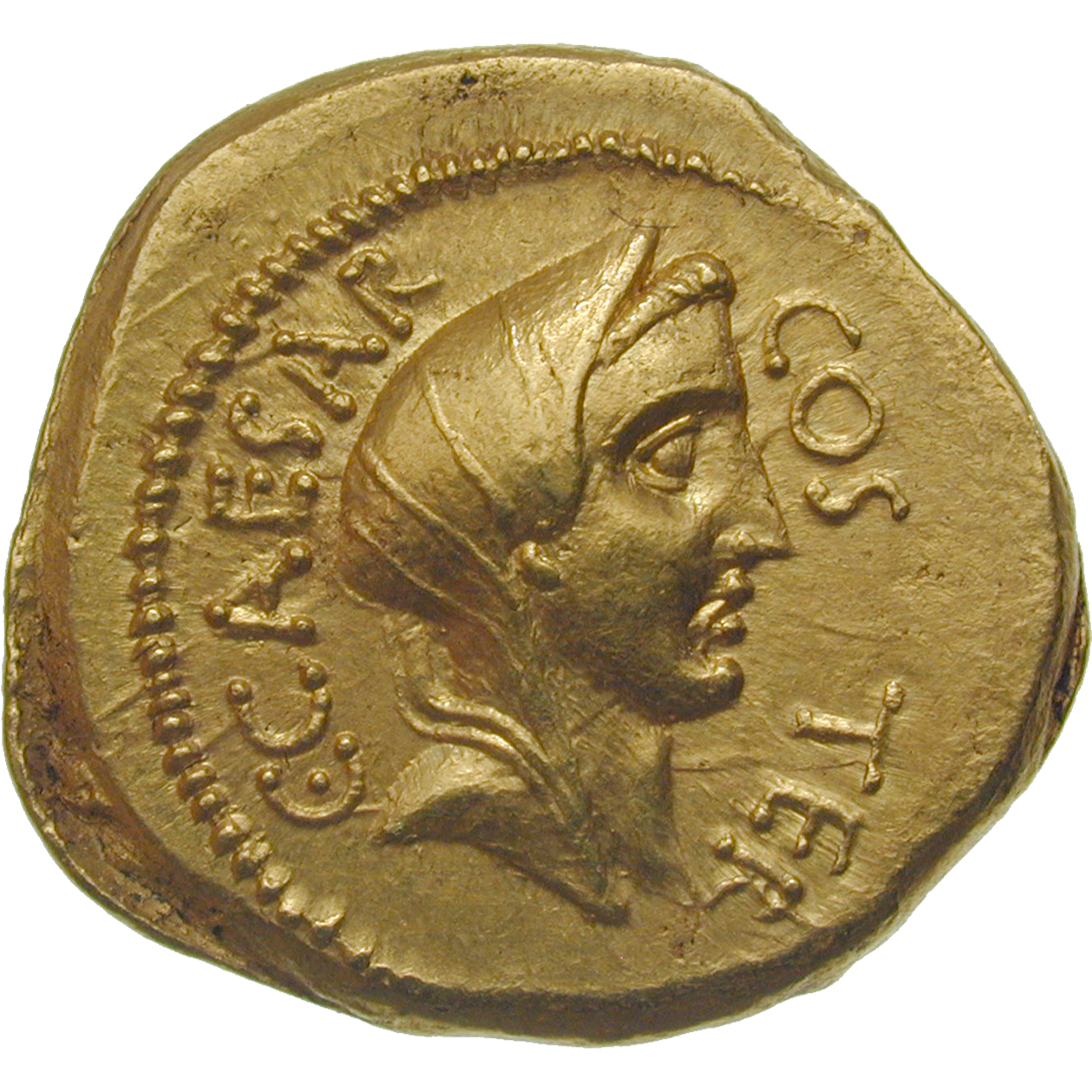Der Herausgeber dieses Denars war Aulus Hirtius. Er war ein Mitstreiter von Julius Cäsar, der von 49 bis 45 v. Chr. einen Bürgerkrieg gegen seinen Rivalen Pompeius Magnus führte. 46 v. Chr. liess Hirtius eine Serie von Goldmünzen prägen, die zur Bezahlung von Cäsars Legionen gebraucht wurden.
Die Vorderseite dieser Aurei zeigt eine Göttin. Dabei handelt es sich entweder um Pietas, die Göttin der Pflicht gegenüber dem Staat, oder um Vesta, deren Kult die Macht des römischen Staats sicherte. Welche Göttin auch immer, mit diesem Bild tat Cäsar kund, dass er seinen Krieg nicht etwa aus schnödem Eigeninteresse führte, sondern für das Wohl der Republik kämpfte.
Die Inschrift C CAESAR COS TER erinnert daran, dass Cäsar 46 v. Chr. zum dritten Mal Konsul war.
Auf der Rückseite sind priesterliche Geräte zu sehen: ein Lituus, der Krummstab der Auguren, ein Krug und eine Opferaxt. Sie weisen darauf hin, dass Cäsar das Amt des Pontifex maximus innehatte, also oberster Priester von Rom war.

